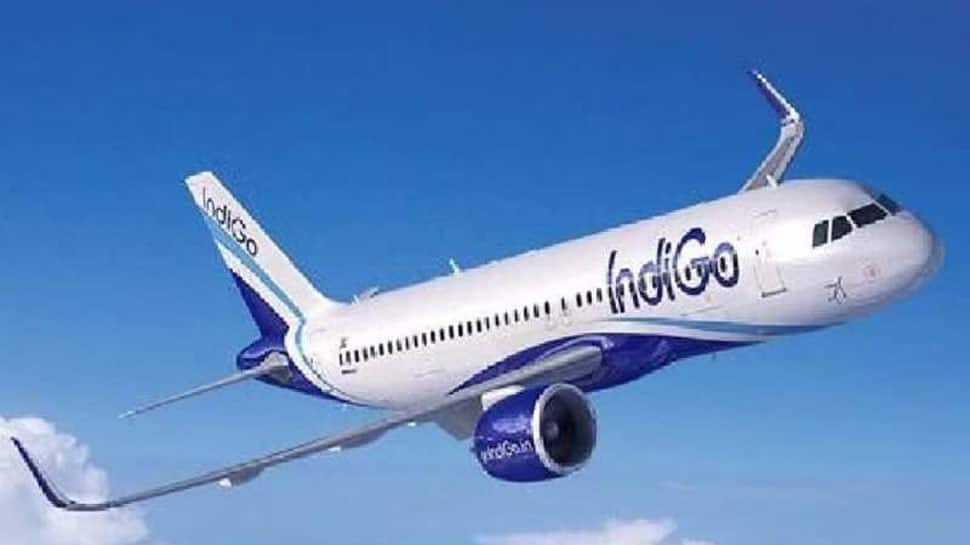Sports
‘There’s a lot of hate:’ These games define the Mizzou-Kansas rivalry
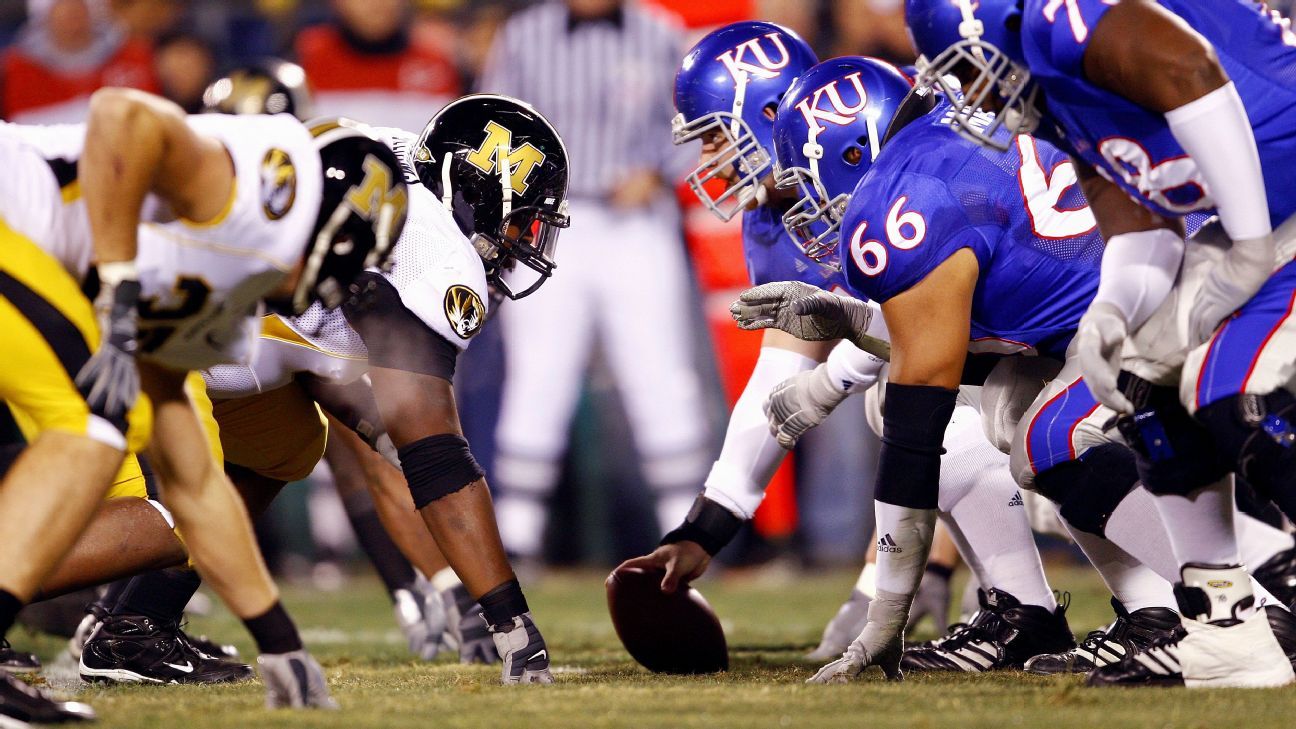
Around 5 or 5:15 p.m. local time on Saturday, the second Missouri Tigers home game of the season will go to a commercial break before the fourth quarter begins, and as has become customary in recent seasons, the Killers’ “Mr. Brightside” will play over the loudspeaker.
It has also become customary that the Mizzou fans in attendance at Memorial Stadium will lob F-bombs in unison at their biggest rival.
For the first time in quite a few years, that rival will be in said stadium to hear it.
![]()
![]()
Missouri and the Kansas Jayhawks will meet on the gridiron for the first time since 2011 (3:30 p.m. ET on ESPN2) and for the first time in Columbia since 2006. When Mizzou left the Big 12 for the SEC in 2012, the rivalry went on pause. The basketball rivalry resumed in 2021, with Kansas winning the first three games and Mizzou finally getting back on the board last December. Now it’s football’s turn.
This rivalry’s roots stem from Civil War days. Both schools’ nicknames were derived from Civil War nomenclature — “Jayhawkers” were robbers and raiders who terrorized slave-state supporters in Missouri counties bordering Kansas, while “Tigers” refers to a group of soldiers who protected the city of Columbia from pro-Confederacy guerillas, including some of the same people who participated in burning Lawrence to the ground in 1863. Mizzou and Kansas fans have certainly leaned into Civil War and Burning Lawrence connotations through the years, as problematic as it may look from the outside.
The rivalry’s name was changed from “Border War” to “Border Showdown” in the 2000s, but it didn’t tamp down the hostility. For that matter, neither did conference realignment. If you’re a KU or MU fan living in Kansas City, you probably have an MU or KU neighbor. The jawing has never really stopped, and if you didn’t believe that before Mizzou fans began adding a “F— KU” chant before the bridge to “Mr. Brightside,” no matter the day’s opponent, that certainly served as a pretty vivid and profane reminder.
“This is deeply seated,” Missouri coach Eli Drinkwitz told ESPN. “There’s a lot of hate, and whether it’s been basketball games that we’ve seen or soccer matches or now football games, we know it’s important to the fan base.”
“I’ve gone to those [basketball games], and obviously the crowd’s extremely into it and they’re exciting to see,” Kansas coach Lance Leipold said. “You can see that there’s an extra intensity during the game.”
The crowd in Columbia on Saturday will be awfully hostile, and the players will have to meet the moment. That’s a tricky thing when almost no player on the field actually grew up with the rivalry. The last time the game was played, after all, current freshman football players were about 4 years old.
“It’s important to go back all the way to the history of it,” Drinkwitz said. “We had Andy Hill, a former Mizzou player and coach, come back and share with us. We had [former ESPN anchor and Mizzou alum] John Anderson come back and share. We’ve really tried to emphasize the importance to the team. We had to educate them on what it is.”
“As this game’s been on the schedule, when I’m out in public appearances and things, people have come up to me and talked more about this one than any other game in recent years,” Leipold told ESPN. “There’s excitement that these two teams are playing again.”
The Mizzou-Kansas football rivalry hasn’t necessarily packed the same number of wild finishes or memorable moments as the men’s basketball rivalry has through the years. But it’s still tremendously hostile, and it still had an impact on multiple national title races, school rushing records and the invention of homecoming. It provided a trio of unbelievable neutral-site games in the 2000s, too. Let’s walk through 10 games that accurately describe the stakes and strange history of this reborn rivalry.

1911: Missouri 3, Kansas 3
“The most impressive feature of a Yale-Harvard game is the meeting of the old ‘grads’ who have come back to their college town to see the contest. After a few years this will be the case with the Missouri-Kansas game.” — Columbia Missourian, 1911
Mizzou claims the oldest homecoming gathering, or at least the oldest continuous homecoming, or at least the most homecoming-like substance, with rallies and parades and whatnot a part of its own homecoming since 1911. No matter what, it all started with KU. In front of about 9,000 fans on Rollins Field in Columbia — Memorial Stadium wasn’t built until the 1920s — Jimmy Shuck’s field goal allowed the home team to tie the game with about five minutes left and salvaged a smidgen of pride from a disappointing 2-4-2 season.
1958: Missouri 13, Kansas 13
You need some impossibly silly endings to drive a proper rivalry, and in the first Border War for new head coaches Dan Devine (Mizzou) and Jack Mitchell (Kansas), two near-.500 teams ran up the silly points here.
Mizzou burst to an early 13-0 lead in front of a sellout crowd of 32,000, thanks in part to a long touchdown off of a downfield lateral from Ed Mehrer to Jerry Curtright. The lead seemed like it was going to hold up despite a trio of missed field goals, but after a short touchdown by KU’s Bill Crank made it 13-7, Homer Floyd reeled in a pass over the middle with just 18 seconds left and raced for a stunning 80-yard touchdown. Victory seized from defeat? Nope! Mizzou’s Dale Pidcock blocked the ensuing PAT attempt. Tie game.
1960: Kansas 23, No. 1 Missouri 7
In almost any broadcast for any Mizzou-Kansas game, you’re almost guaranteed to hear something to the effect of, “These rivals are so bitter, they can’t even agree on the series record!” This game is the reason why.
By his third season in Columbia, Devine had Mizzou on the brink of its first national title. The Tigers had just moved to No. 1 for the first time ever following a blowout of Oklahoma, and with the final AP poll vote coming before bowl season, all Mizzou had to do was beat Kansas to wrap things up. But at 6-2-1, with losses only to two previous No. 1 teams (Syracuse and Iowa), Kansas was on the rise itself. Mitchell had brought in quite a few talented players, including a TCU transfer named Bert Coan. The Jayhawks were ineligible for an Orange Bowl bid because of violations that occurred during Coan’s recruitment, but he hadn’t yet been deemed ineligible himself, so he played against Missouri.
This was one of the most anxious and ruthlessly physical games in the rivalry’s history, producing just 353 combined offensive yards and eight turnovers. But the 6-foot-4 Coan reeled in a touchdown pass from John Hadl to make it 10-0 in the third quarter, then scored again to put the game out of reach.
Nearly three weeks after the game, the Big 8 Conference officially voted Coan ineligible and ordered KU to forfeit two games in which Coan played. That made Missouri the conference champion. An Orange Bowl win over Navy completed an “unbeaten” season — one-loss Minnesota was still named the AP’s national champion (and then lost again in the Rose Bowl) — and Mizzou lists the forfeit as the official result. But since the NCAA never officially recognized the forfeit, Kansas continues to claim a win as well. According to Mizzou, the Tigers lead the overall series 57-54-9. According to Kansas, it’s 56-55-9.
1976: Kansas 41, Missouri 14
The 1960s were a decade of success for both programs, as they combined for three conference titles (two for Mizzou) and 15 winning seasons. But Kansas grew increasingly inconsistent in the 1970s, and after Devine left for the NFL, Al Onofrio’s Tigers went from giants to inconsistent giant killers.
In six seasons from 1972 to 1977, Mizzou beat nine top-10 teams … and went 1-5 against Kansas. Depending on which team you root for, either the peak or nadir of this strange period came in 1976. Kansas came to Columbia 5-5, having lost five of its last six games thanks to an injury to quarterback Nolan Cromwell. Mizzou, meanwhile, had beaten both No. 8 USC and No. 2 Ohio State on the road in nonconference play, then toppled No. 3 Nebraska in the Big 8. The Tigers had risen as high as sixth in the AP poll. But they were also leaking fuel, having lost three of their last five games to fall to 6-4.
Only one team showed up at Faurot Field. Kansas scored 24 second-quarter points and led by as much as 34 as, in the words of the St. Louis Post-Dispatch’s Bob Broeg, “Comeback Kansas embarrassed (1) mystifying Missouri, (2) the red-faced Sun Bowl committee, (3) solemn Al Onofrio and (4) most of a hang-dog crowd of 62,559 Saturday.” Onofrio was fired a year later.
1988: Missouri 55, Kansas 17
Within a decade or so, Mizzou didn’t have to worry about beating giants anymore. Neither did Kansas. By 1986, Sports Illustrated was calling the Mizzou-Kansas-Kansas State trio the “Bermuda Triangle” of college football, “for lost fans, lost coaches, lost attendance.” K-State had never generated much football traction (at least until hiring Bill Snyder in 1989), Kansas enjoyed only one winning season between 1977 and 1990, and Mizzou didn’t manage a single one from 1984 to 1996. The Tigers’ and Jayhawks’ combined destitution was at its worst in 1988, when they managed only four combined wins — two against 0-11 Kansas State, one against Utah State, and one head-to-head.
Kansas took an early 10-7 lead in this one, but Mizzou won the last 3½ quarters by a 48-7 margin. Led by running back Mike Jones — who would switch to linebacker in the pros and make one of the most famous tackles in Super Bowl history — the Tigers rushed for 471 yards while forcing five turnovers. It continued an odd streak: Despite the teams being evenly matched in most of the 14 years from 1983 and 1996, only two games finished within single digits.
1991: Kansas 53, Missouri 29
Glen Mason’s tenure as Kansas’ head coach began disastrously in 1988, but by 1991 he was generating some traction: The Jayhawks would go 6-5 that year and keep inching upward toward a 10-win 1995 breakthrough. They won four of five against the destitute Tigers in this span, and one win broke records.
With both the temperatures and the winds in the mid-30s at kickoff and just 28,000 in the stands in Lawrence, Mizzou found brief success with its passing game in the second quarter, and KU led just 25-22 at halftime despite 156 rushing yards from the Jayhawks’ Tony Sands. But Mizzou’s Jeff Handy stopped completing passes in the second half, and Sands just kept running. He had 141 yards in the third quarter alone. And then he produced another 99 in the fourth quarter. He ended the day with 58 carries — hey, why not, it was the last game of the season — and a then-record 396 yards. Four players have since topped 400 yards in a game, but no one did it against their most bitter rival.
•”Kansas. Missouri. A rivalry that never disappoints – this game leave your brick from start to finish. 🔥 #BorderWar” @FansOfKU @KUAthletics @JayhawkSlant @nostalgic_ku @JayhawkTakeover @JayhawkTakeover @KUJHawks @jaylassoku @JayhawkTalk @JayhawkFocus @Brewenor @BarstoolKU pic.twitter.com/uJw1IRy4WS
— Tony sands (@tonysands24) August 31, 2025
1998: No. 25 Missouri 41, Kansas 23
The 1990s ended with a reversal. Mason left for Minnesota, and KU would suffer nine straight losing seasons; Mizzou, meanwhile, briefly emerged from its stupor under Larry Smith and came achingly close to greatness in 1998. The Tigers led four different top-10 teams at halftime but lost all four games, three by one score. But at least they exacted some Sands-ian revenge.
In a rare early-season meeting, running back Devin West needed only 32 carries to gain 319 yards. Upset-minded KU took a 23-20 lead midway through the third quarter, but rushing scores from West, then quarterback Corby Jones, then West again from 45 yards out, allowed the Tigers to pull away. “I’m going to lie down,” West told the Kansas City Star’s Joe Posnanski after the game, “and I might not get up for a long, long time.”
2007: No. 3 Missouri 36, No. 2 Kansas 28
This rivalry might have all the bitterness in the world, but it hasn’t seen a ridiculous number of tight games. The stars aligned in the early 2000s, however. For three straight years at Kansas City’s Arrowhead Stadium, the Tigers and Jayhawks both fielded solid to great teams — another rarity — and played absolute classics.
The first of the trio was, by any measure, the rivalry’s biggest game. Near the end of the most chaotic season in college football’s history, the rivals met in Kansas City as the No. 2 and No. 3 teams in the country, and with No. 1 LSU having lost the day before, the winner was guaranteed to move to the top spot and, with a win in the following week’s Big 12 championship game, lock up a berth in the national title game. ESPN’s “College GameDay” and a record-at-the-time “GameDay” audience awaited.
The game was cagey, weird and, by the end, incredibly tense. Missouri’s Chase Daniel threw a touchdown pass in each of the first three quarters, and Gary Pinkel’s Tigers eased out to a 28-7 fourth-quarter lead, but Todd Reesing and the KU offense got rolling late. They scored three times and got the ball back with a chance to win, down 34-28. But Mizzou’s defensive line dogpiled Reesing in the KU end zone for a safety with 12 seconds remaining. Mizzou went to No. 1 for a week, but after a second-half collapse against Oklahoma in the Big 12 championship, the Tigers fell short of a national title shot.
2008: Kansas 40, No. 12 Missouri 37
The stakes weren’t the same a year later, with Missouri having already clinched a second straight Big 12 North title and Mark Mangino’s Kansas having lost four of five after starting the year in the AP top 15. But revenge is always sweet, and the Jayhawks got theirs in a snowy and particularly picturesque Arrowhead.
This time it was KU’s turn to take a commanding lead, as two Reesing TD passes and a 19-yard run by Jake Sharp made it 26-10 Jayhawks midway through the third quarter. The Tigers struck back with TD passes from Daniel to Jeremy Maclin and Tommy Saunders, and we were all set for a classic ending. Mizzou took its first lead (30-26) on a short Chase Coffman touchdown, but Reesing and Kerry Meier made it 33-30 Jayhawks barely two minutes later. Mizzou’s Derrick Washington plunged in from 6 yards to make it 37-33 Mizzou with 1:50 left, but on fourth-and-7 from the Mizzou 26, with just 33 seconds remaining, Meier broke loose in the Tigers’ secondary and reeled in a touchdown lob. Phillip Strozier blocked a last-second, 54-yard field goal attempt, and Kansas scored one of the rivalry’s wildest wins.
2009: Missouri 41, Kansas 39
The Arrowhead rubber match had the lowest stakes: Mizzou was 7-4 following the departures of Daniel and other stars, while Kansas had plummeted from 5-0 to 5-6 and was just hoping to salvage bowl eligibility. But in terms of drama, this game was almost impossible to match. It featured 1,100 total yards, four turnovers and another well-timed safety. After trailing by 11 late in the first half, Mizzou seized the advantage with help from a 68-yard touchdown catch by All-American Danario Alexander. But Reesing and Dezmon Briscoe connected for a 74-yard score, and a field goal put KU back on top.
The Jayhawks got the ball back with a chance to run out the clock, but the script writers cued up another safety on another sack of Reesing — in the same end zone as the 2007 safety, no less — and down 39-38, Mizzou got one last chance to win. A quick pass to Alexander and a 27-yard run by Washington (who intentionally went down at the KU 5) set up Grant Ressel for a 27-yard game winner, and he nailed it as time expired.
The game remained at Arrowhead for Mizzou’s final two Big 12 seasons, but Kansas’ post-Mangino collapse was well underway, and both games were forgettable Tigers wins. Still, for three years, the potential of this gridiron rivalry was fully realized.

Both Leipold and Drinkwitz have been part of classic rivalries through the years. Leipold was part of Wisconsin-Minnesota when he was a graduate assistant, then took in Nebraska-Oklahoma and Nebraska-Colorado when he was an assistant in Lincoln. Drinkwitz got to know the Iron Bowl in two seasons as a young Auburn quality control coach, and he spent three years immersed in UNC-NC State when he was in Raleigh. There’s a pent-up hostility that could make Saturday’s matchup unique, but both coaches understand the importance of balancing the extreme need to win this game versus the fact that there are still three more months left in the season.
“If you put all your eggs in that basket, if you lose the game, how are you going to get your team back?” Leipold said. “And if you win the game, how are you going to keep ’em humble enough to be energized, come back and play the next week? The environment will be exciting, and we’re playing a team that’s won 21 football games over the last two years. But keeping the balance — that wherever the game takes us, we’ve got to get ready for a conference season shortly thereafter — will be a big focal point.”
“The players have to understand the intensity level of the rivalry,” Drinkwitz said, “but they’ve also got to understand that raw emotion isn’t going to help you block somebody else or tackle. You’ve got to really bring your fundamentals. It was important for me throughout the summer and offseason to share about the rivalry, but once we’re into game week, it’s going to be about fundamentals and technique and execution.”
Into the future, the Border Showdown will become the latest of what you might call the post-realignment rivalries. Pitt and West Virginia rekindled the Backyard Brawl to great excitement, but only in four-year chunks — 2022-25, then 2029-32. Pitt played Penn State from 2016-19, too. Oklahoma and Nebraska played in 2021 and ’22 and have another home-and-home series set up for 2029 and ’30. Nebraska and Colorado played in 2018 and ’19 and 2023 and ’24. Mizzou and Kansas State played in 2022 and ’23, and Mizzou will play Colorado in 2030 and ’31. (The Tigers will host the Buffaloes on the 40th anniversary of the Fifth Down.) UCLA and Cal, recently separated, have scheduled games for 2026-29.
Mizzou and Kansas have scheduled home-and-home series for 2025 and ’26 and 2031 and ’32. It’s something, but watch 30 seconds of Saturday’s game, and you’ll wonder, as with the Backyard Brawl, how in the hell college football isn’t making sure this game happens every year. It’s a waste of hostility, a waste of a sellout crowd and — an increasing rarity — a waste of a drivable game for local fans.
“Almost everybody except the SEC, I think, has gone almost coast-to-coast with conference members,” Leipold said, “and it makes it more difficult for fans to travel and pick what games they’re going to. When you have these types of matchups, which are very drivable, I think it’s healthy for attendance and all the other things that are also important in today’s college athletics. Anytime you can play bordering states where there’s a past history of competitiveness, I think it’s healthy. It’s great for college football.”
The healthiest version of the sport is when teams are playing games fans want them to play and players are well taken care of. We’ve made great headway on the latter, but we’re inching further and further from the former.
Of course, since teams continue to draw up their nonconference schedules for five or 10 years out, there aren’t exactly holes to fill with these types of games. You’d have to buy out contracts with other schools, and while there would probably be a financial benefit from doing so, it’s not something that happens often. Plus, since the SEC has announced it is expanding to a nine-game conference schedule starting in 2026 and Mizzou has four nonconference games scheduled from 2027-31, it already has some games to get rid of.
Granted, when they put me in charge of the sport, I’ll just draw up the schedules by hand and make sure that the Border War, Backyard Brawl, Bedlam and lots of other semi-lost rivalries are played annually.
“It’s one thing when people tell you about the past history of something,” Drinkwitz said, “but it’s another thing to try to learn it and understand it and realize its significance. That’s really what we try to do is make sure they understand the significance. And this is Team 136 [at Mizzou] — just because we haven’t played them for 13 years doesn’t mean that Teams 1 through 122 don’t have significant feelings about this game.
“That’s really important for us. We get a chance to represent all the past teams when we play.”
Sports
UCLA rallies to win men’s water polo championship
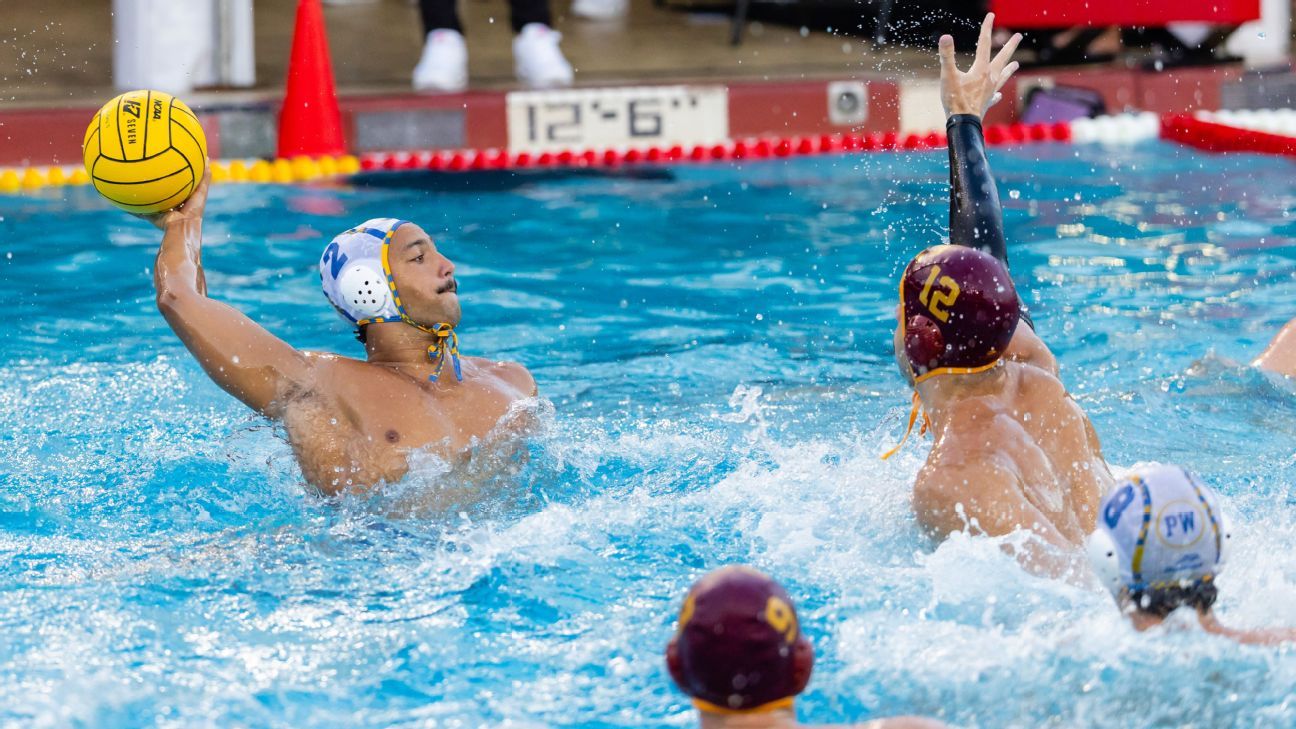
STANFORD, Calif. — Frederico Jucá Carsalade scored with one second remaining to cap a four-goal fourth quarter, and UCLA rallied to beat USC 11-10 to win the men’s water polo championship on Sunday at the Avery Aquatic Center.
It was the 14th championship for the second-seeded and defending champion Bruins (27-2), winning back-to-back titles for the fifth time.
USC (23-4), the top seed, was aiming for its 11th title — all since 1998 — in a tournament that began in 1969. The Trojans won six in a row from 2008-13.
Chase Dodd scored twice to help UCLA to a 3-1 lead after the first quarter.
Stefan Branovic added his second goal to cut it to 3-2 and Jack Vort scored twice in a four-goal run over the final 4:41 to give the Trojans a 6-4 lead at halftime.
USC twice took two-goal leads in the third quarter on scores by Vort and Efe Naipoglu, but Jucá Carsalade scored with 31 seconds left to make it 8-7.
Ryder Dodd scored back-to-back goals — the first after a penalty on Vort — and the Bruins led 10-9 with 2:35 remaining. Jack Martin scored with a man advantage for USC to tie it 32 seconds later.
The two teams split four matches this season.
UCLA beat Stanford 9-7 in the semifinals and USC beat Fordham 16-7 to advance.
UCLA beat USC 11-8 to win the championship last season after Cal beat the Bruins 13-11 in the title game the year before. Cal beat USC 13-12 in 2021 and 2022 to win the championship.
Sports
NFL Week 14 scores: Teams take crucial steps in divisional races
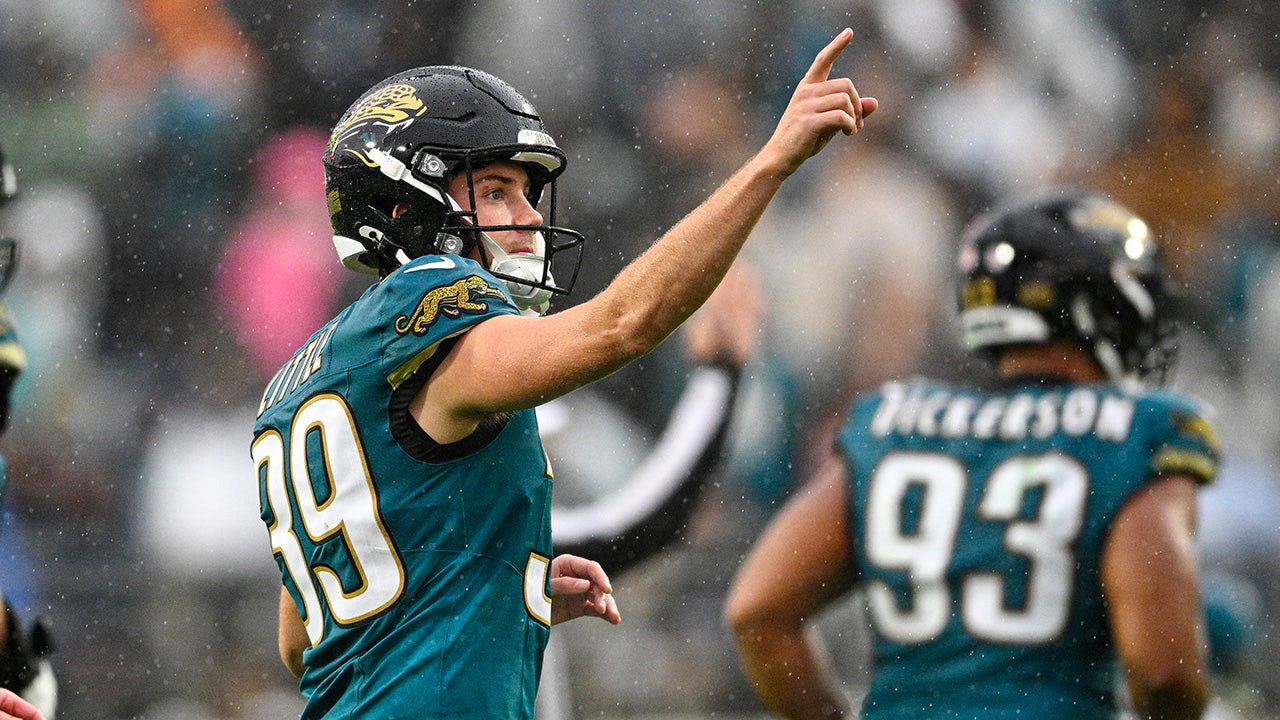
NEWYou can now listen to Fox News articles!
Week 14 of the 2025 NFL season is nearly in the books and the playoff picture did get a bit clearer.
The Pittsburgh Steelers, Jacksonville Jaguars and Green Bay Packers each took sole possession of first place in their respective divisions – the Steelers in the AFC North, the Jaguars in the AFC South and the Packers in the NFC North. Each team had huge wins against divisional opponents that will definitely pay their dividends in a few weeks.
Elsewhere, the Los Angeles Rams and Seattle Seahawks stayed at the top of the NFC West division with the San Francisco 49ers just one game behind both teams. The Tampa Bay Buccaneers suffered an upset loss at home to the New Orleans Saints. They have the edge over the Carolina Panthers in the NFC South, but both teams are now 7-6.
CLICK HERE FOR MORE SPORTS COVERAGE ON FOXNEWS.COM
Buffalo Bills quarterback Josh Allen (17) scrambles away from Cincinnati Bengals linebacker Oren Burks (42) during the second half of an NFL football game, Sunday, Dec. 7, 2025, in Orchard Park, New York. (Gene J. Puskar/AP Photo)
Read below to see how the rest of the games turned out.
Thursday, Dec. 4, 2025
Sunday, Dec. 7, 2025
- Seattle Seahawks 37, Atlanta Falcons 9
- Buffalo Bills 39, Cincinnati Bengals 34
- Tennessee Titans 31, Cleveland Browns 29
- Minnesota Vikings 31, Washington Commanders 0
- Miami Dolphins 34, New York Jets 10
- New Orleans Saints 24, Tampa Bay Buccaneers 20

Jacksonville Jaguars kicker Cam Little (39) signals as he hit a field goal against the Indianapolis Colts during the second half of an NFL football game, Sunday, Dec. 7, 2025, in Jacksonville, Florida. (Phelan M. Ebenhack/AP Photo)
- Jacksonville Jaguars 36, Indianapolis Colts 19
- Pittsburgh Steelers 27, Baltimore Ravens 22
- Denver Broncos 24, Las Vegas Raiders 17
- Green Bay Packers 28, Chicago Bears 21
- Los Angeles Rams 45, Arizona Cardinals 17
- Houston Texans @ Kansas City Chiefs
CLICK HERE TO DOWNLOAD THE FOX NEWS APP

Los Angeles Rams tight end Colby Parkinson, left, avoids Arizona Cardinals safety Budda Baker after pulling in a pass in the first half of an NFL football game Sunday, Dec. 7, 2025, in Glendale, Arizona. (Ross D. Franklin/AP Photo)
Monday, Dec. 8, 2025
Follow Fox News Digital’s sports coverage on X and subscribe to the Fox News Sports Huddle newsletter.
Sports
Neymar helps Santos stay up, knee surgery next
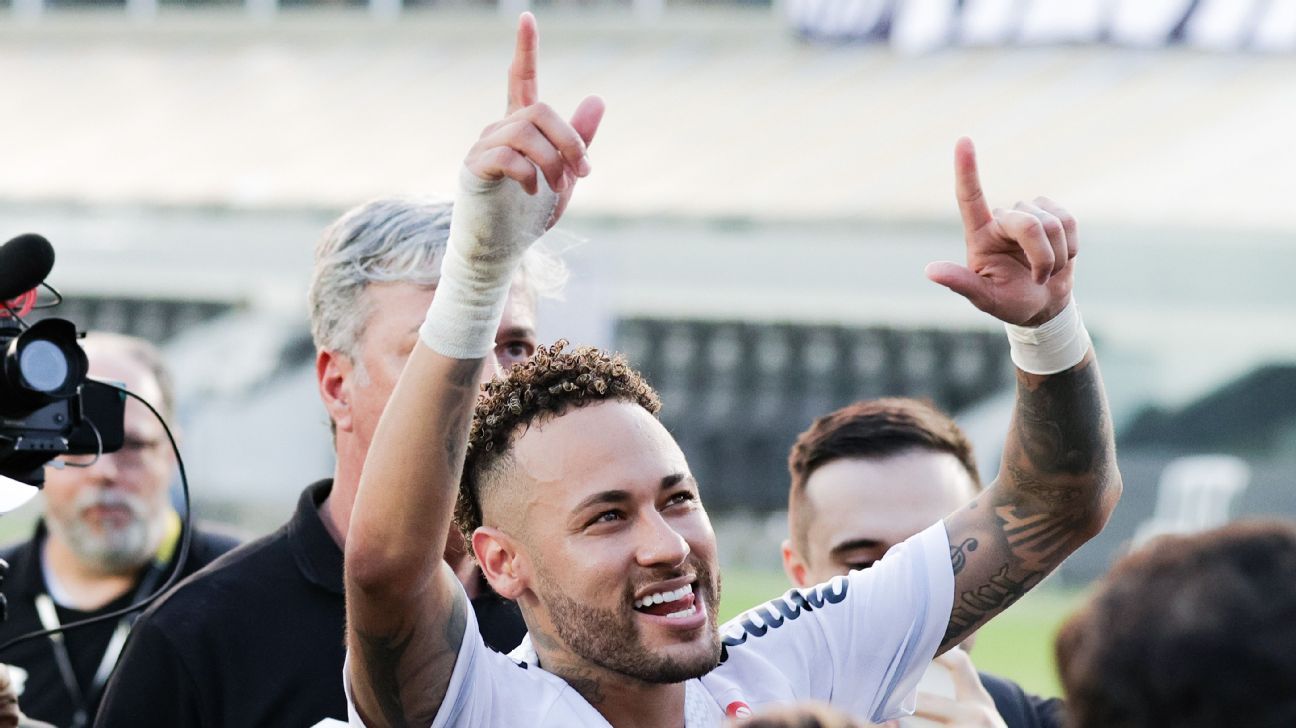
SAO PAULO — Santos and Neymar secured survival in Brazil‘s Serie A on Sunday with a 3-0 win over Cruzeiro, and the 33-year-old soccer star later confirmed he will undergo surgery on his left knee.
Playing its last league match of the season, Santos, which achieved a global following with all-time great Pelé, avoided what would have been the club’s second relegation in club history. Santos was relegated in 2023 for the first time almost a year after the death of Pelé.
Neymar struggled to recover from a torn ACL in October 2023 during a World Cup qualifier against Uruguay. But he proved key for Santos in a successful fight to avoid relegation in the Brazilian championship after promotion last year.
Neymar, who returned to Santos in January, was decisive for the club where he started his professional career. In the last three rounds of the league, Neymar scored a goal against Sport Recife in a 3-0 win, netted a hat trick against Juventude on Wednesday in another 3-0 victory, and on Sunday was an effective playmaker.
Thaciano (26th and 28th minutes) and João Schmidt (60th) scored against Cruzeiro at Vila Belmiro Stadium as Santos finished 12th with 47 points.
Neymar played only 19 of the 38 rounds of the league, which started in April. He scored eight goals.
“I came for this, to try to help the best way I can. These have been tough weeks for me,” Neymar said after the game. “I thank those who were with me to lift me up. If it weren’t for them, I wouldn’t have played these matches because of these injuries, this knee problem. I need to rest and then we will have this knee surgery.”
Neymar did not give more details about the knee injury and surgery. He still hopes to be included in Brazil’s final squad for the 2026 World Cup, though coach Carlo Ancelotti is yet to pick the former captain since he took over in May. The Italian said Neymar would be included if he was fit.
Flamengo won its ninth Brazilian league title midweek after a 1-0 home victory against Ceara. The Rio de Janeiro club also won the Copa Libertadores last month.
Information from The Associated Press was used in this report.
-

 Tech1 week ago
Tech1 week agoGet Your Steps In From Your Home Office With This Walking Pad—On Sale This Week
-

 Sports1 week ago
Sports1 week agoIndia Triumphs Over South Africa in First ODI Thanks to Kohli’s Heroics – SUCH TV
-

 Fashion7 days ago
Fashion7 days agoResults are in: US Black Friday store visits down, e-visits up, apparel shines
-

 Entertainment7 days ago
Entertainment7 days agoSadie Sink talks about the future of Max in ‘Stranger Things’
-

 Politics1 week ago
Politics1 week agoElon Musk reveals partner’s half-Indian roots, son’s middle name ‘Sekhar’
-

 Tech7 days ago
Tech7 days agoPrague’s City Center Sparkles, Buzzes, and Burns at the Signal Festival
-

 Sports1 week ago
Sports1 week agoBroncos secure thrilling OT victory over Commanders behind clutch performances
-
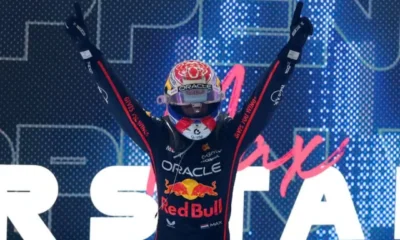
 Sports1 week ago
Sports1 week agoF1 set for final-race showdown as Verstappen exploits McLaren blunder | The Express Tribune





